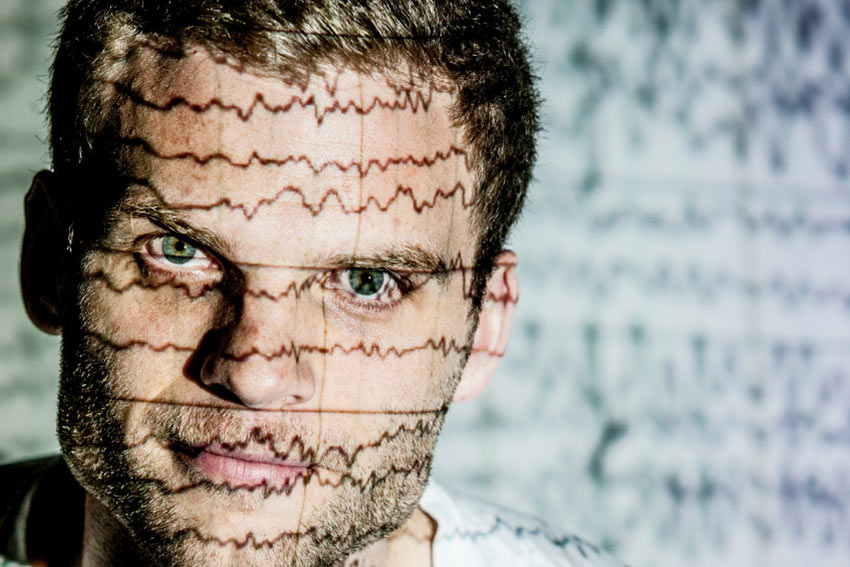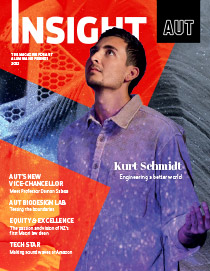For the greater good

Mention artificial intelligence (AI) and most of us think of robots, self-driving cars and smart assistants like Siri and Alexa. But AUT senior lecturer and cognitive neuroscientist Dr Mangor Pedersen is harnessing the power of AI to revolutionise the treatment of epilepsy, traumatic brain injury, and hopefully one day soon, dementia.
With a background in psychology and neuroscience, and an unbridled curiosity for the human brain, Mangor has been developing life-changing new health and clinical technologies for close to a decade.
Since completing his PhD – which focused on using brain scanning and mathematical modelling to identify whether surgery is needed for treatment of epilepsy – he’s been working at Melbourne’s Florey Institute of Neuroscience and Mental Health as the AI Lead on the ground-breaking Australian Epilepsy Project (AEP).
The project aims to improve the medical journey, and lives, of those living with seizures and is Australia’s largest-ever single government investment into epilepsy research. “Traditional science is based on averaging across people, but what we really need to be doing is looking at each person as a unique individual not as an average person. This project is enabling us to do that,” says Mangor, who made the move from Melbourne to Auckland – and AUT - in 2020.
“Currently the pathway from someone’s first seizure to treatment can take up to 10 or 15 years, which is unacceptable. In the Epilepsy Project we will collect advanced brain imaging, genetic and cognition data from 4,000 people, to train a model of what epilepsy is. This can be used as a rapid tool to predict if an individual who has had their first seizure is likely to have another, and if they’d benefit more from surgery or anti-seizure medication.”
The results have been profound. “One 18-year-old girl started having nightly seizures at the age of 15. An MRI didn’t show anything out of the ordinary, but then I tried the method I’d developed during my PhD which looks at the function of the brain instead of the structure. It showed that there was a tiny part of her brain that was hugely connected to everything else. We tested hundreds of other people but couldn’t find anyone else with the same thing, so we decided to surgically remove it. That surgery was performed back in 2014 and since then she hasn’t had a single seizure. Her case study is a fantastic demonstration of what novel technologies can do.”
Since then, his work has expanded into the field of concussion, initially focusing on professional Australian Rules footballers, and now also New Zealand rugby players thanks to funding from New Zealand’s Health Research Council. “It’s an area of strong interest right now, and there’s so much to explore, not only in terms of the impact directly after a head injury, but also the long-term consequences.”
Mangor’s technology “looks a little like a flight path diagram” and enables experts to get a clear picture of an individual’s brain networks. Over the 2022 and 2023 rugby season, he and his team at the AUT Traumatic Brain Injury Network (TBIN) will scan 60 New Zealand Rugby Union players immediately after they’ve suffered a concussion, to ascertain the changes to the brain, and whether or not those changes can help predict their recovery.
“Right now, no one can give us any estimate of how long it will take a player to recover from a head injury – it could be two weeks, it could be two years. But if we can use these new methods to figure out how quickly people will recover, that will be a huge step forward for brain injury. We know that symptoms resolve more quickly than physiological recovery so we need to have better brain recovery assessment tools that clinicians can use.”
His work has already improved the lives of many, but perhaps his most significant contribution is yet to come. “Aging disorders are the next step. We know that brain injury has a link with dementia and it’s crucial to understand why that is, and what that is. Disorders like dementia and Parkinson’s are so devastating and affect so many people, and because of our aging population this is only going to get worse.
On top of that, we have changes in the brain happening 10 or 15 years before any symptoms, so we need to find markers that we can target in advance, so people don’t go down that path.”
It’s challenging, but incredibly fulfilling work.
“Knowing that you can create a new method or brain algorithm that makes someone’s life better is pretty amazing. Even though human neuroscience has seen major developments over the past 20 years, there’s still so much left to understand about the inner workings of the brain and its complexities.
“Developing methods that can deepen our understanding – and more importantly help people suffering from these conditions – has always been utterly fascinating to me. It’s pretty fun too!”
Read more inspiring stories
This story was originally published in Insight, the magazine for AUT alumni and friends. Read the most recent issue of Insight for more stories of groundbreaking research and great AUT graduates who are making a difference around the world.
